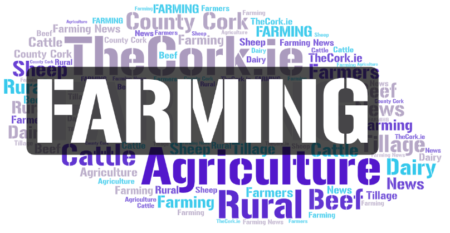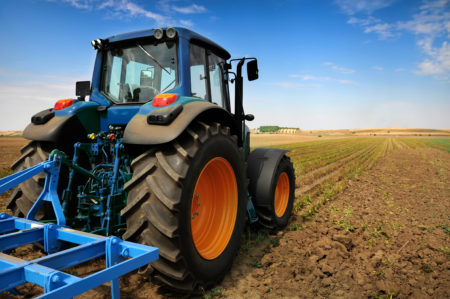2 January 2025
By Roger Kennedy
roger@TheCork.ie
Artificial intelligence is definitely altering the ways we do agriculture: monitor crops, predict weather patterns, and optimize resource usage. Yet, like any other technology promising seismic shifts, it’s not immune to myths and misrepresented facts. These misconceptions not only distort public perception but also shape unrealistic expectations and fears around its potential.
Misconception 1: AI Is a Magic Wand for All Agricultural Problems
While it is incredibly powerful, AI has been heralded as a magic wand to solve the ultimate problems in agriculture. But let us not be very quick to think that AI would solve all farm problems; that is far from realistic. AI systems are based on high-value data, which in most regions is lacking because of either poor infrastructure or pieces of data. Furthermore, the problems that have to do with poor governance, inadequate policies, and systemic inequalities cannot be fixed by AI.
For example, AI may predict the forthcoming drought, but only the farmer can know how a particular type of crop responds to stress in this peculiar environment. AI complements human capabilities, not replaces them. Besides, tools such as crop health monitoring provide invaluable insights but require farmers to interpret and act on the data effectively.
Misconception 2: AI Will Replace Farmers
One of the most persistent fears about AI is that it will replace human labor altogether. Realistically, AI is going to be more about the redefinition of roles rather than outright replacement. By automating routine tasks such as crop monitoring, soil analysis, or pest detection, AI would free up the farmer for more value-added work, such as strategic planning or sustainable farming practices. However, it will still require farmers to feed it the input data and to verify the AI-analysis’ results.
Misconception 3: AI Is Too Complex for Farmers
The stereotype of the technologically incompetent farmer is not only out of date but also patronizing. Today, farmers operate GPS-guided tractors, analyze data from IoT sensors, and survey fields with drones. Many are eager to adopt AI tools if they deliver tangible benefits.
In turn, companies developing AI solutions for agriculture are putting user-friendly interfaces and practical usability to the fore. A set of tools is now made for farmers, not requiring extensive previous technical experience. The complexity of algorithms and models lies underneath, while the end-user experience is not complex at all. A very good example could be how an agriculture monitoring system represents its insights on a ready-to-use, intuitive dashboard.
Misconception 4: AI Works the Same Everywhere
AI is often touted as a panacea, an answer to agricultural challenges anywhere in the world. Agriculture, however, is deeply rooted in local ecosystems, climates, and cultural practices. What works in California’s vineyards may not apply to rice paddies in Southeast Asia.
Localized datasets are key for AI to work properly. Without such data in large parts of the world, AI tools may be less effective or even irrelevant. Companies have to work with local farmers, researchers, and policymakers to ensure their solutions are contextually appropriate. Besides, remote agriculture monitoring tools may help bridge some of these gaps by providing scalable data collection across diverse regions.
Misconception 5: AI Is Only for Large-Scale Industrial Farms
The notion that AI is only suitable for large industrial farms fails to recognize its immense value for smallholder farmers, who are responsible for producing a large share of the world’s food. Today, AI-driven tools and mobile platforms are being developed specifically to meet the needs of these farmers, offering cost-effective and adaptable solutions.
For instance, AI-powered apps can identify pests through image analysis or provide tailored fertilizer recommendations by analyzing soil characteristics. These innovations make advanced technology accessible to smaller operations, breaking down barriers and proving that AI isn’t reserved for big agricultural enterprises. Tools like precision crop monitoring technology empower even the smallest farms to benefit from the advantages AI brings to agriculture.
Misconception 6: AI Can Predict Everything with Certainty
One of the most common misunderstandings about AI in agriculture is the belief that it can provide precise, foolproof predictions. While AI excels in identifying patterns and making forecasts based on data, it operates within the limits of the information it is given. Unpredictable variables such as sudden climate anomalies, unexpected pests, or geopolitical disruptions can still defy AI predictions. For instance, an AI-powered pest detection system might miss the emergence of a new pest species that hasn’t been encountered before.
AI should be viewed as a probabilistic tool rather than a crystal ball. It’s a powerful assistant for risk management but not a guarantee of certainty. Farmers still need to rely on their experience and adaptability to manage the unpredictability inherent in agriculture.
The Bigger Picture
The promise of AI in agriculture is just as immense as the responsibility to address its challenges and misconceptions. Overhyping AI can lead to disillusionment, while underestimating its potential can stall progress. By approaching AI with both optimism and realism, stakeholders can harness its power to create a more equitable and sustainable future for agriculture.
Farmers, policymakers, technologists, and consumers must engage in an open dialogue to separate fact from fiction. Only then can AI fulfill its promise of transforming agriculture — not as a savior or a threat, but as a tool to support the people who feed the world.


